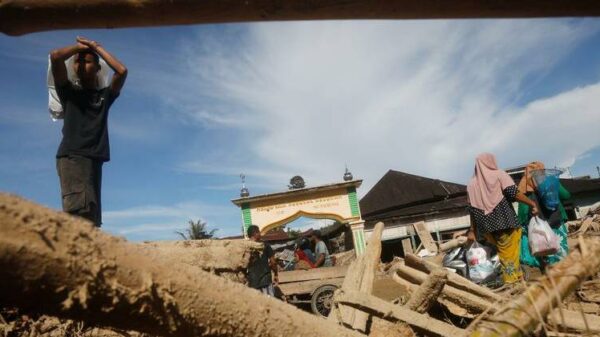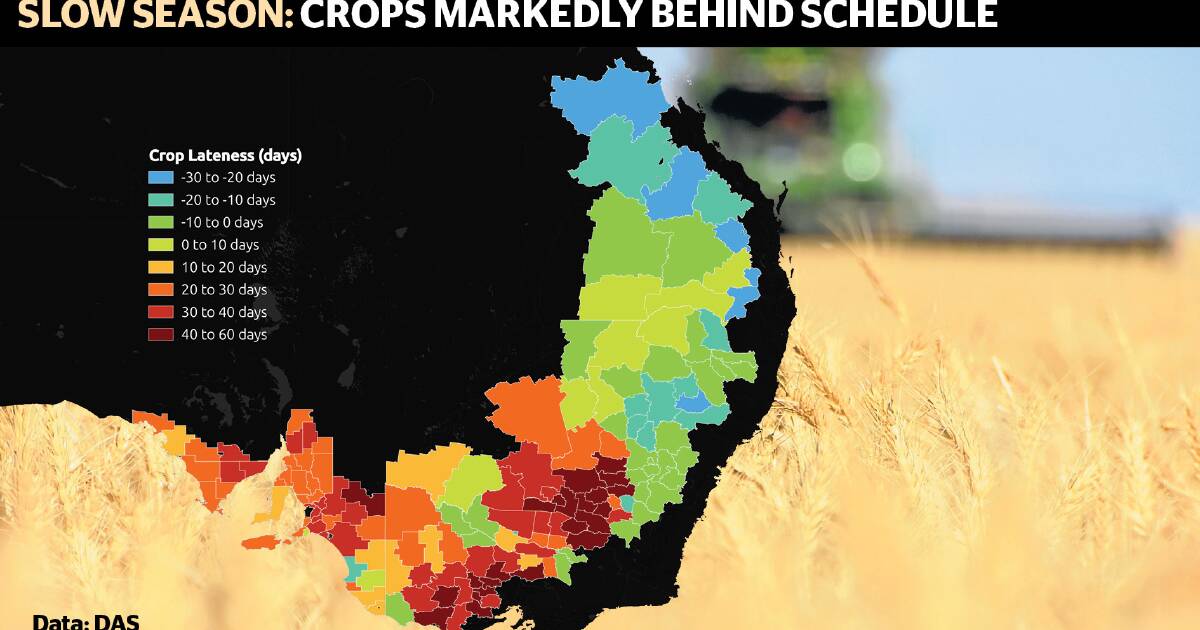URGENT UPDATE: New data reveals that up to 30% of crops in southeastern Australia are critically delayed, threatening yields as the growing season progresses. The latest findings from DAS (Digital Agricultural Services) indicate that as of July 10, 2023, a significant portion of agricultural paddocks across Victoria, South Australia, and New South Wales have not reached establishment.
DAS chief executive Anthony Willmott emphasized the dire situation, stating that many crops are maturing late in the season, raising concerns over potential heat and moisture stress. “This means the potential of yield and quality losses,” Mr. Willmott warned.
While some in the agricultural sector remain optimistic due to forecasts of a wetter-than-average spring from the Bureau of Meteorology (BOM), the reality on the ground is stark. Data collected from Agriculture Victoria moisture probes reveals that crops are heavily reliant on in-crop rainfall to finish strong, particularly in key regions like the Western District, eastern Wimmera, and North Central areas.
In Sheep Hills, near Warracknabeal, moisture is present in the top 50 centimeters, but conditions worsen below that, with only 29% moisture at 50cm and none at 70cm. Similarly, at Raywood, moisture levels are only 48% at 50cm, plummeting to 13% at 80cm.
Data from Lake Bolac further illustrates the severity of the situation in the typically high-rainfall Western District, showing just 27% moisture at 60cm. Farmers in these dry areas face an uphill battle, as the combination of late crop establishment and lack of moisture could lead to significant yield shortfalls unless a mild and wet spring materializes.
Mr. Willmott noted that regions like the Central West and Riverina in New South Wales are now averaging a staggering 44 days behind the establishment baseline from 2020-2024. In Victoria, the Wimmera and Mallee regions are lagging by 20 days, with only 42% of crops established as of the latest data.
Crops in South Australia are also trailing, being 26 days late, mirroring last year’s dismal season when they were 24 days behind at this point. In contrast, Western Australia shows a more favorable scenario, with 94% crop establishment and 1.76 million hectares of canola already mapped.
Farmers are urged to closely monitor conditions as the growing season unfolds. The implications of these delays are profound, affecting not only crop yields but also the economic stability of agricultural communities. As authorities report, the coming weeks will be critical for recovery and success in this crucial agricultural landscape.
Stay tuned for further updates on this developing story as conditions evolve.































































